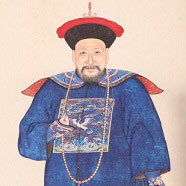-

Time-Travel Through Petals: The 2,000-Year-Old Art of Reading Nature’s Clock in Chinese Paintings
“Flower-Signal Wind” refers to the seasonal breeze that brings the message of blooming flowers. According to the traditional Chinese calendar, the period from Lesser Cold to Grain Rain comprises eight solar terms over four months. For each segment, a flower that most accurately embodies its blooming season is chosen to symbolize the “Flower-Signal Wind.

